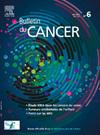[南太平洋与法国大陆之间的洲际多学科肿瘤学视频会议:讨论了2000多例癌症病例后医疗后送的原因]。
IF 0.8
4区 医学
Q4 ONCOLOGY
引用次数: 0
摘要
导言:法国大陆和海外领土之间的护理差异导致获得创新和专业护理的机会不平等,导致癌症患者死亡风险增加。自2019年以来,法属波利尼西亚(Pf)、新喀里多尼亚(NC)和法国大陆之间通过视频会议举行了多学科协商会议(RCP Pacifique),促进了获得医疗专业知识并限制了医疗后送的使用(EVASAN)。方法:回顾性分析2019年至2024年RCP pacific中讨论的所有文件,报告人口统计数据、EVASAN的原因和EVASAN后的发展。结果:在涉及1159例患者的2010年讨论中,有242例做出了EVASAN决策(占讨论的12%;Pf患者119例(49.2%),NC患者123例(50.8%)。EVASAN决定的主要原因是:手术(48.3%),介入放射治疗(14.0%),复合放疗(14.0%)和pet扫描(12.4%)。尽管推荐了EVASAN,但由于以下原因,30名患者没有撤离:在澳大利亚中心治疗、需要在家治疗的紧急情况、通过远程咨询解决问题、COVID隔离和患者拒绝。接受EVASAN治疗后,82.6%的患者返回家中。结论:RCP pacificque提供了一种限制EVASAN在海外领土使用的解决方案,同时保证了公平获得护理。加强地方基础设施和增加技术技能转让是实现这一目标的关键。本文章由计算机程序翻译,如有差异,请以英文原文为准。
Évolution du parcours patient d’oncologie : motifs d’évacuation sanitaire après plus de 2000 discussions de dossiers en RCP Pacifique
Introduction
L’inégalité d’accès aux soins innovants et spécialisés dans les territoires d’Outre-mer, entraîne une perte de chance pour les patients atteints de cancers. Depuis 2019, une réunion de concertation pluridisciplinaire (RCP) en visioconférence entre Polynésie française, Nouvelle-Calédonie, et France hexagonale dénommée RCP Pacifique, facilite l’accès à l’expertise médicale et limite le recours aux évacuations sanitaires (EVASAN).
Méthodes
Nous avons analysé rétrospectivement tous les dossiers discutés en RCP Pacifique entre 2019 et 2024 pour rapporter les motifs d’EVASAN et évolutions post-EVASAN.
Résultats
Sur les 2010 discussions de dossiers concernant 1159 patients, 242 décisions d’EVASAN ont été prises (12 % des discussions ; 20,9 % des patients) pour 119 patients de Polynésie française (49,2 %) et 123 de Nouvelle-Calédonie (50,8 %). Les principaux motifs d’EVASAN décidés en RCP Pacifique étaient : chirurgie (48,3 %), geste de radiologie interventionnelle (14,0 %), radiothérapie complexe (14,0 %) et TEP-scanner (12,4 %). Malgré une EVASAN recommandée, 30 patients n’ont pas été évacués pour les motifs suivants : prise en charge dans un centre australien, urgence nécessitant un traitement à domicile, résolution du problème via une téléconsultation, confinement Covid, refus du patient. Après EVASAN, 82,6 % des patients sont rentrés à domicile après traitement.
Conclusions
Les RCP Pacifique offrent une solution pour limiter le recours aux EVASAN dans les territoires d’Outre-mer, tout en garantissant l’équité d’accès aux soins. Le renforcement des infrastructures locales et un transfert accru de compétences techniques sont les clefs pour développer cet objectif.
Introduction
Disparities in care between the French mainland and overseas territories are responsible for unequal access to innovative and specialized care, leading to an increased death risk for cancer patients. Since 2019, a multidisciplinary consultation meeting (RCP Pacifique) by videoconference between French Polynesia (Pf), New Caledonia (NC) and mainland France, facilitates access to medical expertise and limits the use of medical evacuations (EVASAN).
Methods
We retrospectively analyzed all files discussed in the RCP Pacifique between 2019 and 2024 to report demographic data, reasons for EVASAN and post-EVASAN developments.
Results
Of the 2010 discussions concerning 1159 patients, 242 EVASAN decisions were made (12% of discussions; 20.9% of patients) for 119 Pf patients (49.2%) and 123 NC patients (50.8%). The main reasons for EVASAN decided were: surgery (48.3%), interventional radiology procedure (14.0%), complex radiotherapy (14.0%) and PET-scan (12.4%). Despite a recommended EVASAN, 30 patients were not evacuated for the following reasons: treatment in an Australian center, emergency requiring treatment at home, resolution of the problem via teleconsultation, COVID confinement, and patient refusal. After EVASAN, 82.6% of patients returned home after treatment.
Conclusions
The RCP Pacifique offers a solution to limit the use of EVASAN in overseas territories, while guaranteeing fair access to care. Strengthening local infrastructure and increased transfer of technical skills are the keys to developing this goal.
求助全文
通过发布文献求助,成功后即可免费获取论文全文。
去求助
来源期刊

Bulletin Du Cancer
医学-肿瘤学
CiteScore
1.90
自引率
16.70%
发文量
224
审稿时长
37 days
期刊介绍:
Without doubt, the ''Bulletin du Cancer'' is the French language publication of reference in the field of cancerology. Official organ of the French Society of Cancer, this journal covers all the information available, whether in the form of original articles or review articles, but also clinical cases and letters to the editor, including various disciplines as onco-hematology, solids tumors, medical oncology, pharmacology, epidemiology, biology as well as fundamental research in cancerology. The journal proposes a clinical and therapeutic approach of high scientific standard and regular updates in knowledge are thus made possible. Articles can be submitted in French or English.
 求助内容:
求助内容: 应助结果提醒方式:
应助结果提醒方式:


